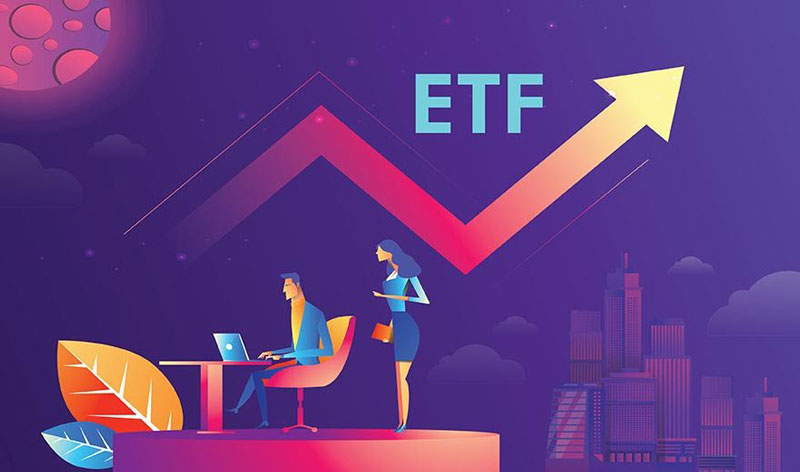Investing in 3x ETFs Can Be Riskier Than You Think
Nov 23, 2023 By Triston Martin
Leverage is the process of increasing an investment's potential profit by taking out a loan. As a result, profits may be enhanced, and so can losses. Buying on margin is a frequent way to invest in stocks with leverage. However, some ETFs already have built-in leverage, aiming to achieve returns 2x or 3x those of the Index or sector they track.
All forms of leveraged investing carry a high level of risk for investors. 3x ETFs, on the other hand, carry a higher level of risk due to the use of additional leverage to boost returns. While leveraged ETFs might be handy for trading in the short term, they come with significant long-term risks.
What Does Leverage Mean?
"Leverage" refers to obtaining additional profit from an investment by borrowing money. Options, futures accounts are just a few of the financial tools that investors may use to leverage their assets. To make acquisitions of assets, an investor who does not have sufficient cash on hand must take out a loan.
Investment returns (ROI) are expected to outweigh the cost of borrowing. Investing with leverage is a dangerous approach that experienced investors should only utilize since it can increase profits and losses. Leveraged exchange-traded funds (ETFs) are an excellent option for investors who don't want to take on the additional risk of using leverage (ETFs).
How Does It Work?

The assets of the FAS ETF will be invested in long positions in the Russell 1000 index constituents. Investments in leveraged and unleveraged exposure to the Russell 1000 Index are also made, allowing the Index's returns to increase by a factor of three. Consider that the ETF's five-year performance is not comparable to three times the Index's. That said, it's vital to keep in mind that if you want to hold on to the Fund for more than one day, it will likely have a different return than the 300 percent return of an index during that time period."
Leveraged and Regular ETFs: The Difference
Exchange-traded ETFs often hold a broad portfolio of securities or other assets, such as common stocks. You may buy and sell this basket using its ticker symbol like you can buy and sell Meta stock or Amazon stock. While the underlying stocks' value may diverge from the market price from time to time, the overall performance should mirror the underlying Index and be equivalent to that performance over more extended periods. It's a straightforward matter.
Volatility and Compounding

Triple ETFs carry significant compounding risk, the profits and losses applied to an investment over time. Capital gains or interest income from an asset can be reinvested through the process of compounding to create higher returns over time. In leveraged ETFs, traders use mathematical formulas to calculate compound interest, a process that can lead to huge gains or losses.
Let's say an investor invests $100 in a triple leverage fund. Suppose the benchmark index rises 5% one day and falls 5% the next day. On consecutive days, the 3x leveraged fund gained 15% and fell 15%. The initial investment on the first day of trading was $100 and the profit was $115.
Derivatives
There are many 3x ETFs that use derivatives to mirror the underlying benchmark (such as futures contracts, swaps, or options). Investment instruments called derivatives are based on agreements between two or more parties. The value of the underlying financial asset determines its value. Market, counterparty, liquidity and connection risks are the most common dangers traders face when dealing with derivatives.
The Constant Leverage Trap and Daily Resets
Every day, most ETFs with leverage reset to their benchmark index to maintain a constant leverage ratio. The perpetual leverage trap results from this reset procedure, which is not how standard margin accounts function. Stock prices will ultimately fall to the point where they do great harm or even wipe out highly leveraged investors if left unchecked for an extended period. One day in October of 1987, the Dow Jones, one of the world's most reliable stock indices, lost nearly 22% of its value.
High Cost to Income Ratios
In addition to high cost ratios, triple-leveraged ETFs are not popular with long-term investors because of their high leverage. The owners an expense ratio in order to cover the fund's overall annual operating expenses. Expenditure ratios may include a wide range of operating costs.
Impact of Expense Ratios: A higher expense ratio reduces the net returns to investors. For example, if an ETF generates a return of 10% in a year but has an expense ratio of 1%, the net return to investors would be 9%. Conversely, if the expense ratio is lower, such as 0.05%, the net return to investors would be 9.95% under the same conditions.
3x ETFs: These are leveraged ETFs designed to return three times the daily performance of their underlying index. While they do typically have higher expense ratios (around 1% annually, as you noted), this fee is largely due to the costs associated with the frequent trading and management needed to maintain a leveraged position. The 1% fee can significantly impact returns, especially when the leverage does not work in the investor's favor, or during times of high volatility.
Comparison with Index ETFs: A typical stock market index ETF, which simply tracks an index without leveraging or employing complex strategies, usually has much lower expense ratios. With costs as low as 0.05%, these funds are less expensive to operate, reflecting in lower costs for investors.

How to Categorize Your Business Expenses?

5 Essential Social Marketing Tips for Fintech Startups in 2024

What is Passive Income?

Treasury Calls for More Oversight on Bank-Fintech Collaborations

Business Equity Loans Explained: Which Option Suits Your Needs

Hiring a Business Tax Accountant: Key Considerations Guide

Investing in 3x ETFs Can Be Riskier Than You Think

How Citi is Shaping the Payments-as-a-Service of Tomorrow?

Best Vision Insurance Companies Of 2022

